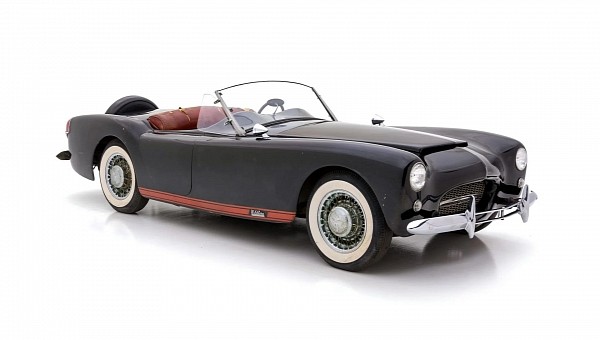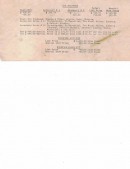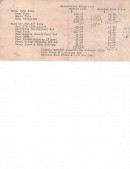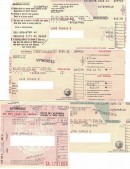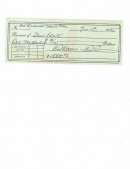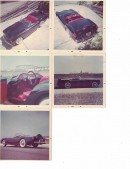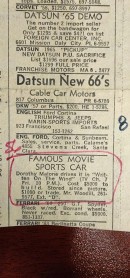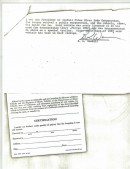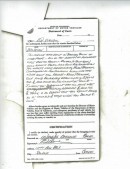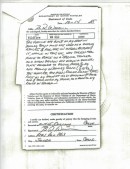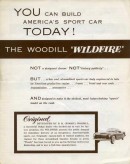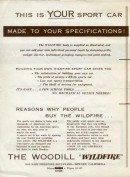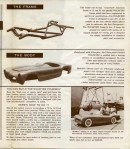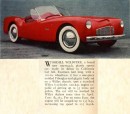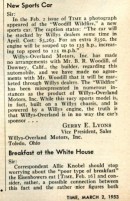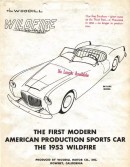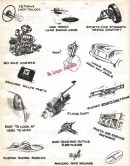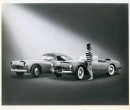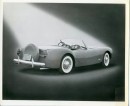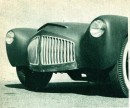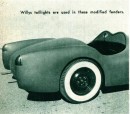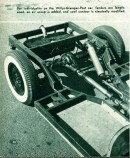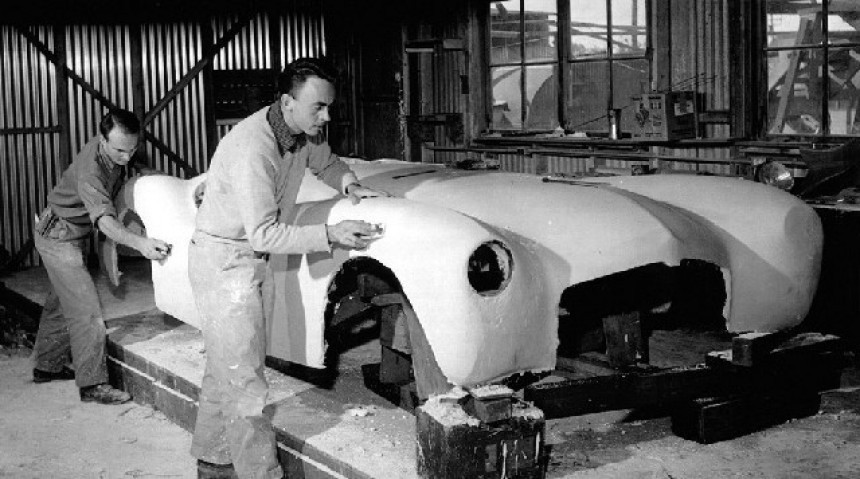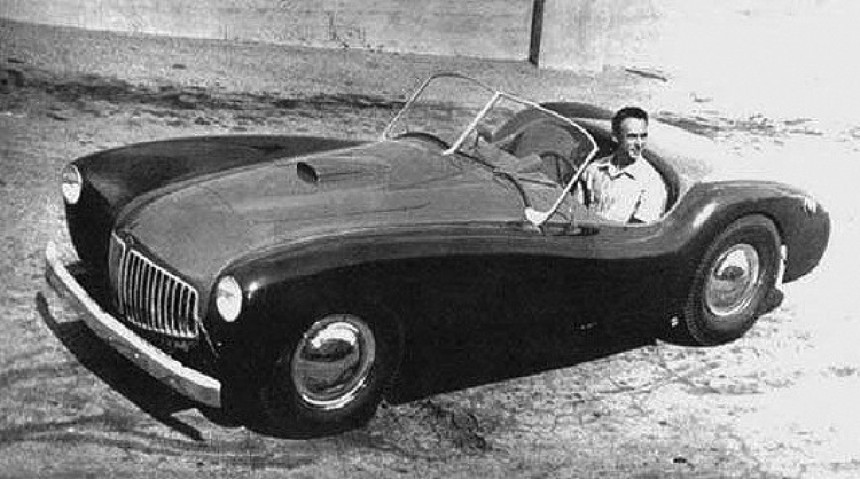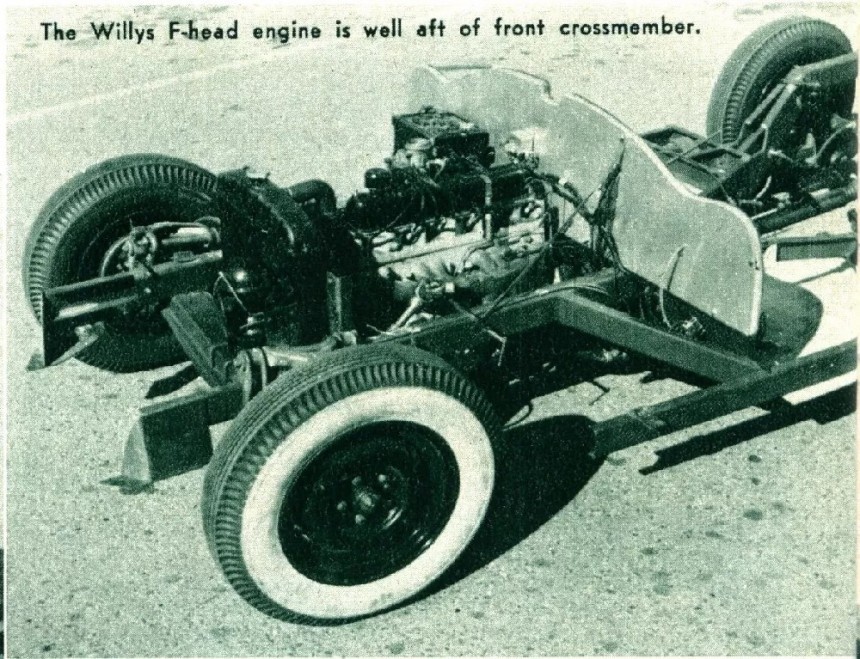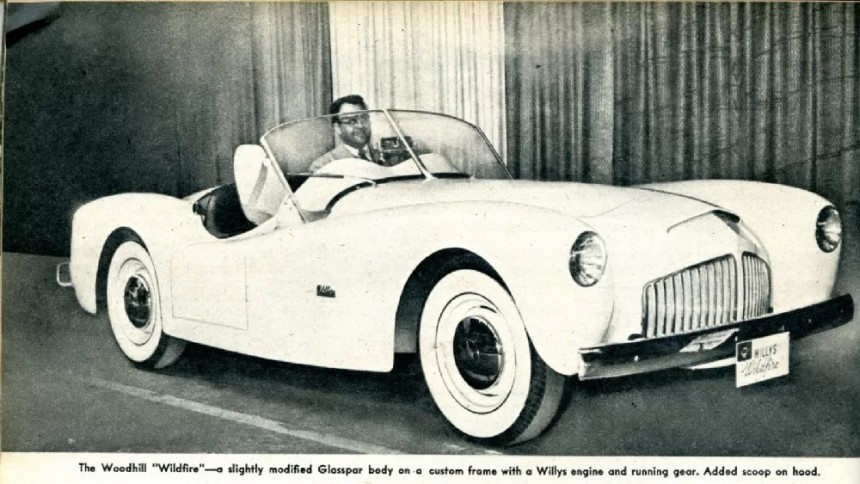Name the first Glass-Reinforced-Plastic-bodied series sportscar ever made in the U.S. of Automotive, quickly! Thank you for giving your best shot, but no, it's not the Corvette. Wanna have another go? You bet! Kaiser-Darrin? Close, but still lukewarm. Alright, last chance; think well before saying a name.
Woodill Wildfire! Thank you, that is correct; here's a virtual pat on the back and a warm handshake emoji for being the fastest internet forager in the West. A young man -with a set of intake valves grafted where most humans have an analog blood pump (lore name "heart") - saw that post-war America lacked something crucial in the broad motorized department: Fun.
After 1945, veterans from the European front brought back to the States memories of a somewhat unusual piece of machinery. Looking forward to get back to civilian life, they wondered why hasn't Mighty Michigan thought about an affordable, exciting, and good-looking sportscar before.
America won the war by shifting all possible resources toward military production – and car manufacturers didn't invest time, money, and intelligence in designing new personal automobiles. It took several years for the auto industry to get back to full steam. Even then, Detroit focused on the significant gaps in the market instead of filling in the blanks for a selected few.
Sportscars were not a money-making recipe in the late 40s and early 50s – or so the accountants from Michigan seemed to believe. Partly, they were right; Americans were looking to improve their living rather than have expensive piston-infused fun.
That last bit was one reason for NASCAR – old cars modified by young moonshine runners to race against one another. The trend, while inspiring, was not the automobile standard of fun; one visionary dealer from California sniffed the wind of change and promptly acted.
His name was Blanchard Robert "Woody" Woodill, a prosperous automobile dealer. He owned one of America's most important Dodge dealerships in the 40s and 50s. It was so substantial for Chrysler that the corporation allowed him to vend Willys products alongside the Mopars.
Woody's father had started the car-selling business, and the son bought off the dealership in 1948. The 33-year-young Woodill Jr took note of the European sportscars nostalgia. Determined to give young Americans the car of their dreams, he arranged with a fiberglass car body producer to supply the shells.
As for the drivetrains and frames, the visionary already had what he needed. He would start from a Willys-sourced chassis and engine (the little Jeep was solid proof for the build quality), plant the lightweight body on top, and sell it under his own name and brand.
His dream car became the Woodill Wildfire – a catchy name for a promising new attraction. The sleek, low-profile, long hood made it look fast, and the curvy lines and aerodynamic shape redefined automotive speed. (During the war, Blanchard Robert Woodill had been teaching Aeronautical Engineering professor at the University of Southern California).
The car debuted in November 1952 at the third Annual Petersen Motorama in Los Angeles, California. Understandably, people loved it, but Woodill alone couldn't upscale production to mass volumes. He offered the buyers completed cars or assembly kits (the photo gallery contains an advertisement for the automobile).
Willys bosses heard about their dealer feat and invited him for a business talk. The carmaker fancied putting its badge on the grille of the elegant Wildfire. Woodill even raved to the media about his future sportscar. The February 1953 issue of Time magazine announced the wonder like this:
"Woodill Wildfire, a brand-new 100-m.p.h. plastic sportscar, made its debut in California last fall. Fourteen feet long, with a 101-in. wheelbase, it has a one-piece molded Fiberglas-and-plastic body set on a Willys chassis, uses a standard Willys 6-cylinder, 100-h.p. engine capable of getting up to 35 miles per gallon. The car will be stocked by Willys dealers some time in April. Cost: $3,263. For an extra $350, the engine will be souped up to 135 h.p., increasing top speed to 125 m.p.h."
(For metric-inspired readers: the ad specs of the Wildfire translate into a 4.27-meter-long two-seater with a 2.57-meter wheelbase. The 2.6-liter, 101-PS flathead straight-six engine was a money saver, with an economy of 6.7 liters of gasoline per 100 km. The top speed of the 735-kg/1.620 lbs. standard-equipped Wildfire would have been around 160 kph. The optional 137-PS engine took the needle to 201 kph).
Woody himself had slipped the news to the journalists. Unfortunately, he "forgot" to ask Willys if they would actually build his Wildfire. So, in March of 1953, an official statement from the carmaker debunked the myth. Shortly after, Kaiser took over Willys, and the Woodill idea was scrapped (it was a direct threat to the Kaiser-Darrin). The Wildfire would not spread like its name implied, after all.
With limited resources, the car didn't become the supernova it was dreamed to be – and who knows what its fate might have been if a major manufacturer had adopted the first fiberglass sports automobile. The Corvette went on to become a stunning success, but it was prophesized by a car that fell on the forgotten side of history. The video accompanying this story might be helpful to a petrolhead's imagination.
The Woodill Wildfire was built as a complete car in minimal numbers between 1952 and 1956. Some sources estimate as little as seven automobiles, while others go for a more generous fifteen-strong production. Another two hundred complete kits were made available to the buyers in the same timeframe. The "put together" instructions were demostrated in a 1955 You ASked for It TV show episode (watch it in the second video).
Given the rarity and anonymity of the make and model, it's a small wonder we will see one in 2023. But Woody Woodill was – if anything – a marketing genius, and one of his Wildfires starred in the 1956 classic movie Written on the wind. Dorothy Malone drove it in the film and won the Best Supporting Actress Academy Award for her screen performance.
The car, build for Woody Wilson himself, is not in the greatest of conditions – the gallery is more than portraying – but it runs and drives, according to the seller. A 255-CID (4.2-liter) flathead Ford V8 (courtesy of the Mercury Division) and an automatic transmission push the fallen star forward.
At one point, the original owner (constructor, designer, promoter, and all-around visionary), Mr. Woodill, advertised the car for sale – in 1965. He asked $1,000 (or trade) for his automotive (and cinematographic) history piece. Today, the burned-out Wildfire is again on the market, and the current bid is at just over $15K, with six days left.
After 1945, veterans from the European front brought back to the States memories of a somewhat unusual piece of machinery. Looking forward to get back to civilian life, they wondered why hasn't Mighty Michigan thought about an affordable, exciting, and good-looking sportscar before.
America won the war by shifting all possible resources toward military production – and car manufacturers didn't invest time, money, and intelligence in designing new personal automobiles. It took several years for the auto industry to get back to full steam. Even then, Detroit focused on the significant gaps in the market instead of filling in the blanks for a selected few.
Sportscars were not a money-making recipe in the late 40s and early 50s – or so the accountants from Michigan seemed to believe. Partly, they were right; Americans were looking to improve their living rather than have expensive piston-infused fun.
His name was Blanchard Robert "Woody" Woodill, a prosperous automobile dealer. He owned one of America's most important Dodge dealerships in the 40s and 50s. It was so substantial for Chrysler that the corporation allowed him to vend Willys products alongside the Mopars.
Woody's father had started the car-selling business, and the son bought off the dealership in 1948. The 33-year-young Woodill Jr took note of the European sportscars nostalgia. Determined to give young Americans the car of their dreams, he arranged with a fiberglass car body producer to supply the shells.
His dream car became the Woodill Wildfire – a catchy name for a promising new attraction. The sleek, low-profile, long hood made it look fast, and the curvy lines and aerodynamic shape redefined automotive speed. (During the war, Blanchard Robert Woodill had been teaching Aeronautical Engineering professor at the University of Southern California).
The car debuted in November 1952 at the third Annual Petersen Motorama in Los Angeles, California. Understandably, people loved it, but Woodill alone couldn't upscale production to mass volumes. He offered the buyers completed cars or assembly kits (the photo gallery contains an advertisement for the automobile).
"Woodill Wildfire, a brand-new 100-m.p.h. plastic sportscar, made its debut in California last fall. Fourteen feet long, with a 101-in. wheelbase, it has a one-piece molded Fiberglas-and-plastic body set on a Willys chassis, uses a standard Willys 6-cylinder, 100-h.p. engine capable of getting up to 35 miles per gallon. The car will be stocked by Willys dealers some time in April. Cost: $3,263. For an extra $350, the engine will be souped up to 135 h.p., increasing top speed to 125 m.p.h."
(For metric-inspired readers: the ad specs of the Wildfire translate into a 4.27-meter-long two-seater with a 2.57-meter wheelbase. The 2.6-liter, 101-PS flathead straight-six engine was a money saver, with an economy of 6.7 liters of gasoline per 100 km. The top speed of the 735-kg/1.620 lbs. standard-equipped Wildfire would have been around 160 kph. The optional 137-PS engine took the needle to 201 kph).
With limited resources, the car didn't become the supernova it was dreamed to be – and who knows what its fate might have been if a major manufacturer had adopted the first fiberglass sports automobile. The Corvette went on to become a stunning success, but it was prophesized by a car that fell on the forgotten side of history. The video accompanying this story might be helpful to a petrolhead's imagination.
The Woodill Wildfire was built as a complete car in minimal numbers between 1952 and 1956. Some sources estimate as little as seven automobiles, while others go for a more generous fifteen-strong production. Another two hundred complete kits were made available to the buyers in the same timeframe. The "put together" instructions were demostrated in a 1955 You ASked for It TV show episode (watch it in the second video).
The car, build for Woody Wilson himself, is not in the greatest of conditions – the gallery is more than portraying – but it runs and drives, according to the seller. A 255-CID (4.2-liter) flathead Ford V8 (courtesy of the Mercury Division) and an automatic transmission push the fallen star forward.
At one point, the original owner (constructor, designer, promoter, and all-around visionary), Mr. Woodill, advertised the car for sale – in 1965. He asked $1,000 (or trade) for his automotive (and cinematographic) history piece. Today, the burned-out Wildfire is again on the market, and the current bid is at just over $15K, with six days left.
